Sapien Loop and Our Own World – Part Four: Technology
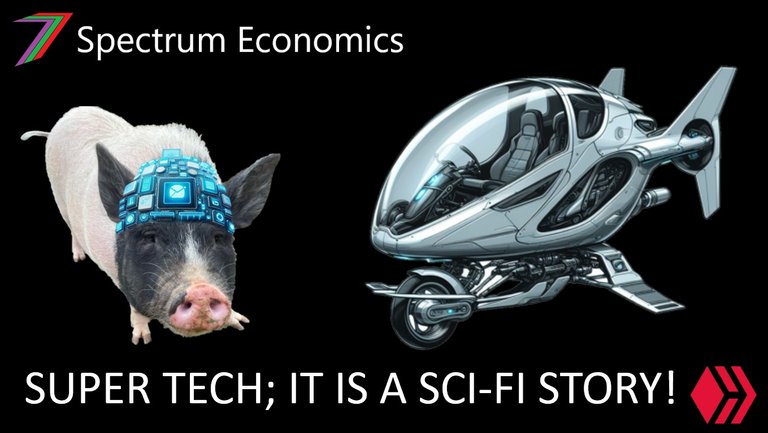
Technology is an intriguing double-edged sword. However, it appears the blade pointing inwards has become sharper than the one facing out.
Technology can be used to vastly improve our lives. Almost every aspect of our lives has been enhanced in some way by technology. The main areas of improvement relate to the variety of output and the efficiency in producing that output. Technology has enabled the invention and creation of products and services that can meet almost all our needs and wants. Technology has enabled us to produce them faster and on an enormous scale; nobody needs to miss out.
In reality, technology never reaches its fullest potential; it is not allowed to do so. Allowing technology to address everything it could is not in the best interests of large businesses that hold considerable monopoly power (i.e., Big Business). This is because their focus is on the entire market and not competition within it. Businesses in competitive markets are more likely to be supportive of improved technology, as it helps them compete.
Technology has the potential to create abundance. However, Big Business desires scarcity. It enables them to push prices up, as supply is insufficient to meet demand. Scarcity can be used to maintain monopoly power, as other businesses can be kept from the resources they need to operate and even attempt to compete.
Technology to create an abundance of energy is often held back. Coal, oil and gas were heavily promoted because they are scarce. Much of this scarcity has been created by restrictions on supply. There has been a shift towards what is called green energy, such as wind and solar. Both of these are inefficient and only capture a smaller proportion of possible wind or solar energy. Nuclear power has been restricted despite its efficiency and safety. Humidity-generated electricity, or the capturing of energy directly from the atmosphere, has received limited support. Any technology that could create unlimited energy greatly reduces and may eventually eliminate scarcity. Hence, it is not pursued.
Technology has the potential to create long-lasting solutions. However, Big Business relies on consistent and continuous demand. Therefore, short-term or incomplete solutions are preferred. A good example is the pharmaceutical industry, where businesses pursue treatments instead of cures. Many of these treatments have ‘side effects’ that require other treatments. An ideal pharmaceutical product is one that keeps people alive but sick. Hence, creating long-run customers.
Technology, because of its capability to increase efficiency, has the potential to vastly decrease working hours. However, this is often not desirable for Big Business, Government, or trade unions. Instead of investing in technology, which can require a significant capital outlay, Big Business often prefers to remain labour-intensive. This is especially true if cheap labour is easily available (e.g., access to low-cost migrant workers). Implementing new technology requires workers who are skilled in that technology. Despite requiring fewer workers initially, it is possible there will be labour shortages because too few people have the relevant new skills. Hiring fewer workers and laying off existing ones will lead to higher unemployment. This is bad for both the Government and trade unions.
Instead of improving the efficiency of the individual workers, some technology can completely replace the worker. For example, there are automated checkout machines, driverless vehicles, and artificial intelligence. This type of technology is likely to be more appealing to Big Business. There is less burden to find trained employees. Instead, installation and maintenance can be outsourced. This also means employees are less able to appropriate any of the financial rewards from improved efficiency and reduced costs. It is possible wages could be pushed down further as more people would be competing for the few remaining jobs.
Technological advancements can be pursued by anyone with an innovative or brilliant mind. However, the application and full development of technology require considerable capital. This normally puts its proliferation in the hands of a few. Governments, Big Business and the big banks have the biggest say in what technology is proliferated.
Governments could fund technological development directly, they could support the private sector through grants or subsidies, or they could become a substantial customer for the technology. Big Business could fund technology themselves if the estimated return is significant, or they could use their political influence to obtain funding from the Government. Banks and other financial institutions have access to enormous resources through loans and have political influence.
Government, Big Business and banks focus on the technology that benefits them the most. That could involve the development of technology that is broadly beneficial to everyone. However, that is often not the case.
Government can be divided into the institutions and the people officially running them (e.g., politicians and high-level bureaucrats). Technology that benefits the institutions enables them to gain more power and control over the people. It is not something that sits with just the Government of the day but is passed on to future Governments to be further enhanced (e.g., digital identification or closed-circuit television). Technology that benefits the people running the Government is closely linked to those that put them in and keep them in ‘power’. The relationship between politicians and the other areas of the Establishment is explained in Part Two of this series.
Big Business desires technology that enables them to make a large profit, but more importantly, they desire technology that can result in reduced competition. This can be done in many ways. Patents can be issued to prevent competitors accessing or replicating technology (e.g., pharmaceutical products). Restricted compatibility between complementary products can render alternative technology redundant even if it is superior (e.g., computer hardware and software). Big Business also wants political influence. Any technology that strengthens their grips over Governments is desirable (e.g., computer systems).
Banks desire technology that enables them to control money. The more money kept within the system, the greater control banks have over it. Automated Teller Machines (ATMs) reduced average withdrawals. Debit cards, internet and phone banking reduced cash transactions. If it is completely adopted, Central Bank Digital Currencies (CBDCs) should be able to keep all money within the system. Control over money leads to greater control over Government; this was discussed in Part Two.
Technology is developed for those that are able and willing to fund it. They promote the technology they wish to fund to the public by claiming it creates convenience, improves safety and security, or improves quality of life. They attack the technology they do not wish to fund by claiming it will replace jobs or could be exploited by criminals (e.g., cryptocurrency). Some of these claims are accurate, but they are predominantly motivated by personal gains and Establishment agendas.
I believe collaborative efforts and open-source research iare the best hope that we have that technology can continue adding value to people’s lives. This enables people and businesses to work together on potentially large and expensive projects. The good examples of such collaboration are in areas such as blockchain and 3-D printing.
Technology in Sapien Loop
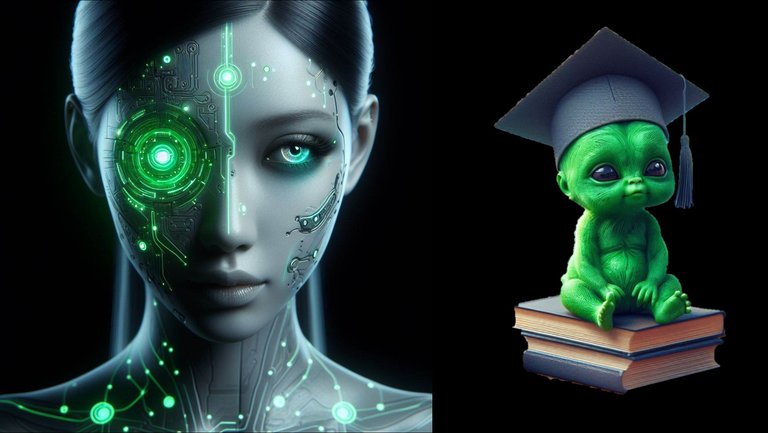
Technology plays an important role in the Sapien Loop stories. In ‘End of an Era’, the Sapien Loop story starts in a world that in many ways is more technologically advanced than our own. Like in our own world, some of the technology is used for the benefit of the majority, while other technology is not. Over time, the benevolence of technology usage appears to have diminished. This is because the development of technology has become concentrated in the hands of the few, and it has become agendised.
Early Technology
‘Frozen in Time’ takes us back to the first technology revolution of the twelfth loop. The Alset family developed the majority of the technology. This gave them enormous control over what was to be developed. However, at that time the power structure of Sapey was considerably more basic than what it evolved into over the following thousand years. The district chiefs ran their own districts, and they consulted with the head philosophers and head theologists from the House of Divine Knowledge.
The Alset family members were motivated by the desire to create and to earn wealth from their creations. Their motivation for power was limited to their own family. They had no interest in interfering with the existing power structure.
The Alset families completely changed Sapey. They invented new forms of power and energy, transport systems and vehicles, medications and medical equipment, communication infrastructure and devices, machinery and factories, and many more. The Alset family became incredibly rich. Other companies applied the technology further. It was applied to enhance entertainment. Radio, followed by television, was used to broadcast events. Stage shows were adopted into films that could be watched by all who had televisions. The quality and standard of living of the Linap improved dramatically in a very short time.
The Alset family’s wealth created jealousy. This jealousy turned to anger when it was revealed that the family were using medication to enhance their intelligence. An Alset family member had also invented a serum that would permanently increase the intelligence of the Linap if applied prior to birth during the early stages of development.
For the twelfth loop, this was arguably the most negative scientific discovery for the Linap. The serum caused sickness and infertility in the second generation of the genetically modified Linap. This is explained in Part One of the series.
This was only the beginning of the Linap’s tampering with genetics. They used their knowledge to create two new species (i.e., the Sapiods and Sapiens). Both of these new species were intended to serve the now weakened Linap. To control the new species, a new power structure was established. This power structure changed the way Sapey operated.
The complete collapse of the Linap population put the growth of technology on hold and in some ways even in reverse. The rise of the Sapiens gave the Linap another chance. They had managed to shelter themselves from the hardships of life while maintaining power. At the same time, the Linap had become afraid of the Sapiens. They far outnumbered them and were physically stronger. The Linap’s strength was their intelligence. The combination of intelligence and control over assets and wealth enabled them to continue advancing technology.
Unlike in the ancient world, where technology was invented out of passion and in part to generate wealth, it was now invented with an agenda.
Technology of Cellrebrum Rehabilitation Centre
In ‘End of an Era’, the Cellrebrum Rehabilitation Centre was at the heart of many significant technological advancements. Most of these related to the combined use of drugs and virtual reality technology. Previously, Sapiens convicted of crimes were locked up in prisons. The Cellrebrum Rehabilitation Centre offered an alternative to punishment. This was explained in the short story Welcome to Cellrebrum.
Inmates were not intended to be held for long. They would either be brainwashed and returned to society as no threat, lobotomised and turned into Sapiod-equivalent labour, or sent to be test subjects for the Capital. Time was not a constraint. The virtual reality technology could be used on inmates during their sleep. Potentially, years of scenarios could be played out virtually in a matter of days, based on the assumption that time can be compressed in sleep. The chance someone could be completely brainwashed was incredibly high. Many of those that failed were predetermined for various reasons.
Eventually such technology could become possible. Virtual reality projects are being used to study brain activity during sleep.
The head scientist of the rehabilitation centre had technology implanted into his head. This enabled him to perform rapid and advanced thinking as well as connect directly to other technology. However, as his connection to technology grew, his connection with other Sapiens as well as even his own emotions became more distant. Neural implants are a reality. The Neuralink Company has already implanted a brain chip into a human subject. The chip allows users to transfer data from their brains more quickly and allows them to control devices with their minds.
Artificial Intelligence
The technology implanted in the head scientist of the rehabilitation centre was upgraded with artificial intelligence (AI). This further enhanced the capability of his brain, but it also allowed the AI to gain partial control over him. With the development of both brain chips and AI, we are likely to see them both combined. However, will the user have full control, or will the AI take over?
In ‘End of an Era’, AI was developed in several phases. It began as a basic virtual assistant for a technology company. Its main purpose was to find, source, and sort information from internal and external databases. It was later developed to become mostly autonomous from external control. It could perform activities without being asked but was limited by certain built-in parameters. The AI was upgraded to operate within robots, cyborgs, and brain chips. It could travel through the internet and was able to self-enrich as well as upgrade. It became incredibly powerful, and its level of autonomy made it hard to control. However, built-in backdoor access to a couple of users meant it was never fully out of control. This would change if these users became permanently unavailable.
AI is one of the fastest-growing areas in technology. Various AI programs are available online. They can perform a wide variety of tasks; these include:
- answering questions based on information it can rapidly pull from the internet
- creating content such as pictures, videos, stories, and songs
- performing tasks such as reviewing and editing articles
- various different types of analysis, such as pattern recognition, predictive analysis, data analysis, and financial analysis
- automation of routine and tedious tasks
- most relevant to the story, the capability to learn and adapt
An AI-supported cyborg was introduced in ‘Frozen in Time’, and her story was elaborated in the short story ‘Polly’. A Sapien was badly injured. Without the assistance of technology, she would have died. Some of her body parts and even organs were replaced with artificial equivalents. This was possible because technology in robots was already highly advanced and other characters had undergone partial integration of technology into their bodies. However, this was the most significant step forward. In this case, the use of technology was positive in that it saved the character’s life. The motivations for saving her life were not magnanimous. The character had a special ability that the ones saving her wanted to exploit. They were able to do this by inserting a chip containing the AI into her brain.
In our world, artificial limbs and even organs are a reality. It is possible for cyborgs to be built. It is also possible for AI to be integrated with the artificial and organic parts of a cyborg. What is not so certain is how this combination will work. How much autonomy will the human organic parts of the cyborg have?
Genetic Engineering
In ‘End of an Era’, genetic engineering played an important role in an attempt to reverse the damage done from the previous genetic upgrade that plagued the Linap for a thousand years. Despite being the ruling class of species, for reasons described earlier in the post, the Linap’s position always felt precarious. The Linap’s disdain for the Sapiens ruled out crossbreeding. They needed another way. Rediscovering the Sentray provided a possible way forward. Genetic engineering had progressed to a point where genes could be isolated. The Sentray had self-healing properties that could be extracted from them without completely modifying their species. After rigorous testing, a serum was developed that would enable the Linap to self-heal.
If the health of the Linap could be restored, the Sapiens were no longer needed. This led to the plan to contaminate the water to make the Sapiens infertile so that they would be wiped out in a generation. This is an example of how technology can be a great boon to one group, the ones controlling the technology, but lead to disaster for another.
Blockchain
In Part Two of the series, Central Bank Digital Currency (CBDC) and the Sapien Loop world tokens were discussed to some length. It was another technology designed to help those in power to control those who were not. An additional application of this technology, blockchain, was applied to elections. This was to ensure that elections could not be rigged through voting. This is arguably a good use of technology; fair and anonymous voting should be desirable to all. The blockchain voting system was installed to promote these virtues. Since they were true, it was very easy to promote. However, the main reason the Linap wanted the integrity of voting protected was out of fear that elections could be rigged against them. The Linap had such confidence in their system that they believed rigging election voting was an unnecessary risk. They deemed rigging could only work against them.
In our world, rigging votes is not uncommon, and claims of rigging votes are even more common. This is rarely done to fix who wins. The winner in Western elections is always an Establishment candidate. The most common reason for rigging voting is to create division among the people. Hence, the reason claims of voter fraud outnumber the actual number of occasions of voter fraud. If the purpose of rigging votes were the intention of changing the results of the election, we would hear far less about it.
I would argue that our world has not progressed as far as Sapey. The mechanisms of control are not yet as established. Therefore, our leaders need to rely more heavily on divide-and-conquer strategies. This enables them to control the narrative along particular lines. Controlled opposition is inserted to direct the disgruntled group. This also helps maintain the illusion of choice and democracy. I expect one day our system will evolve to a point where such strategies are less necessary.
Energy
Sapey has very advanced methods of generating energy. However, these methods are kept secret from the Sapiens. The technology allows energy to be pulled straight from the atmosphere, which is similar to what we could be using in our world. In ‘End of an Era’ these energy generators are located in the wastelands to convert waste into a fine black ash-like substance, which is claimed to be toxic. The generators are used in this context because so much power is needed to create the ash and then to distribute it everywhere that could be seen by the Sapiens (e.g., from the regions or from the view of the Sapien Loop trains). Far less advanced, less efficient and infrastructure-dependent energy is used elsewhere. This is in part to create scarcity but more importantly to the Linap, to prevent the Sapiens from having access to free energy, which they could use against the Linap.
The Alset family first developed these generators. They were used to secretly power underground cities. The Sapiens became aware of these in ‘Frozen in Time’.
Along with the generators, ‘Frozen in Time’ introduced cryogenic freezing pods. The pods were invented to keep prominent persecuted members of society alive during this difficult period in history. Not long after being frozen, Sapey’s society completely collapsed. When life finally began to improve, access to the pods was lost. This led to them being frozen for a thousand years. The advanced generators kept the pods running the whole time.
Mind Voice
One of the most important inventions in ‘Frozen in Time’ was Mind Voice. Mind Voice could convert thoughts into speech. It was designed to convert Sapes’ thoughts into words so that they could be better understood. This technology did not require a chip to be inserted into the brain. Instead, it was headgear that could be worn and easily removed. The Mind Voice was used later in the book to help determine if a character was still alive by picking up her thoughts and mental activity.
The application of Mind Voice in ‘Frozen in Time’ was for the benefit of everyone. This was because it was created with the intention to help others. There was no profit motive, and there was no hidden agenda. However, technology built with good intentions can often be applied in ways that are detrimental. The Mind Voice will be revisited in the final book.
In reality, a similar device called ‘No More Woof’ is being developed. This device is designed to read the thoughts of dogs. There are also brain scans that can translate human thoughts into words.
Other Technology
Sapey has many other forms of technology that have greatly increased efficiency. These include advanced mining and rapid production of goods through automation. Improving efficiency is a great use of technology. However, if the technology is controlled by only the few, they can reap all the rewards if they choose to do so. Everyone else is left with what they are willing to give up. The governance and financial systems ensure this can be enforced.
Arguably, the most heinous technology is used in the slaughterhouses. The slaughterhouses in Sapey are fully automated. There is zero need for any intervention. At one time, tens or even hundreds of thousands of Sapes are kept in each of these slaughterhouses. The Sapes spend their entire lives travelling along extremely long, slow-moving conveyor belts. At the end of the conveyor belt is a slaughtering machine that dissects the Sapes into different parts. The parts are moved into driverless trucks, which then transfer their body parts to the regions to be turned into food.
Massive factory farms are extremely common. In the US, almost all animals farmed for their meat are factory-farmed. The whole farming and killing process is becoming more automated. It is not at the extent described in ‘End of an Era’ or ‘Hamlet to the Rescue’, but something similar is a possible reality.
Sapey’s Held Back Technology
Despite Sapey’s highly advanced technology, in some areas, they lagged behind our own. One such area was flight. Only the elite Linap, the enforcers, and emergency teams had access to flying vehicles. The enforcers and emergency teams were only allowed to fly them out of the regions in emergencies and generally along the path of the Sapien Loop line. The Linap wanted the Sapien Loop to be the only form of transport for the Sapiens. Access to flight would have enabled the Sapiens to fly to areas of the wastelands beyond the reach of the ash sprays. Thus potentially exposing the lie. Even the richest Linap did not have access to impressively capable flying vehicles. One example was the helicopter that travelled considerably slower than the train. We could argue that flying technology had barely improved in a thousand years.
In our own world, people are able to travel freely wherever they like. This could change with the uptake of autonomous vehicles. It is possible that at some point in the future almost all new vehicles will be autonomous. If they are autonomous, they could have built-in restrictions preventing people from going wherever they like. This would align with the designation of environmental no-go zones (used in a similar manner to the wastelands). Australia has already planned to have such zones in the future.
The Technology Theme

Technology plays a huge role in the Sapien Loop books and short stories. It is essential to the story as Sapey draws very close to the end of the loop. The peak in technology aligns with the critical turning point leading to the rapid collapse of society. This is because technology has the power to magnify anything. It can magnify both the good and the bad. In Sapey, the development of technology was in the hands of the few. These few were motivated solely by malevolent self-interest. Technology magnified their actions and ultimately triggered the fall of Sapey and possibly the end of the twelfth loop.
The Sapien Loop Series

I am writing a trilogy of books titled Sapien Loop. The first in the series is Sapien Loop: End of an Era and the second is Sapien Loop: Frozen in Time. I published both of these books as ebooks on Amazon, and I have posted completed chapters to my @captainhive account. I anticipate publishing the third book in early 2027. I expect to title this book Sapien Loop: Worlds Collide. In 2025, I plan to write short stories about some of the characters and their adventures. I will post these to my @captainhive over the course of the year.
Brief Summary of Sapien Loop: End of an Era
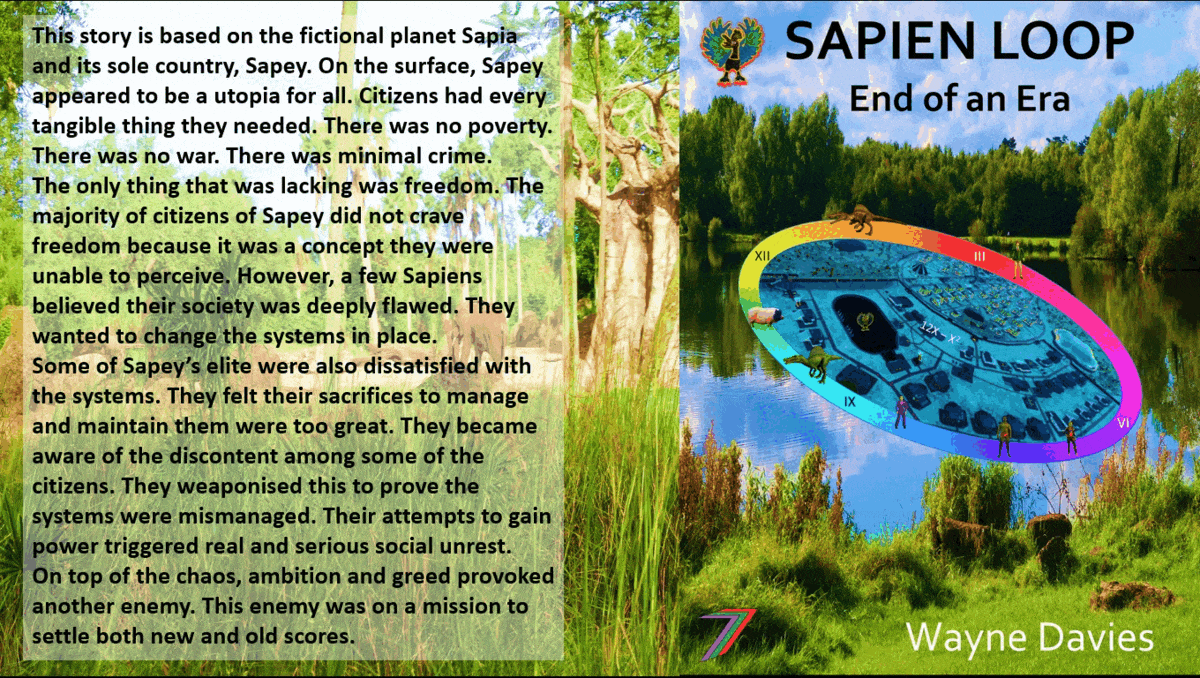
This story is based on the fictional planet Sapia and its sole country, Sapey. Sapey is portrayed as a form of utopia for all its citizens. No poverty. No war. Almost no crime. Opportunities for all.
This was enough for most citizens, but not all. In one of the small regions, some of the citizens had become discontent. They felt something important was missing in their lives. Their discontent did not go unnoticed. Some of the Sapey elite wanted to weaponise this discontent to gain more power. This created more chaos than they anticipated. This led to further widespread social unrest.
On top of the chaos, ambition and greed provoked another enemy. This enemy was on a mission to settle both new and old scores.
Brief Summary of Sapien Loop: Frozen in Time
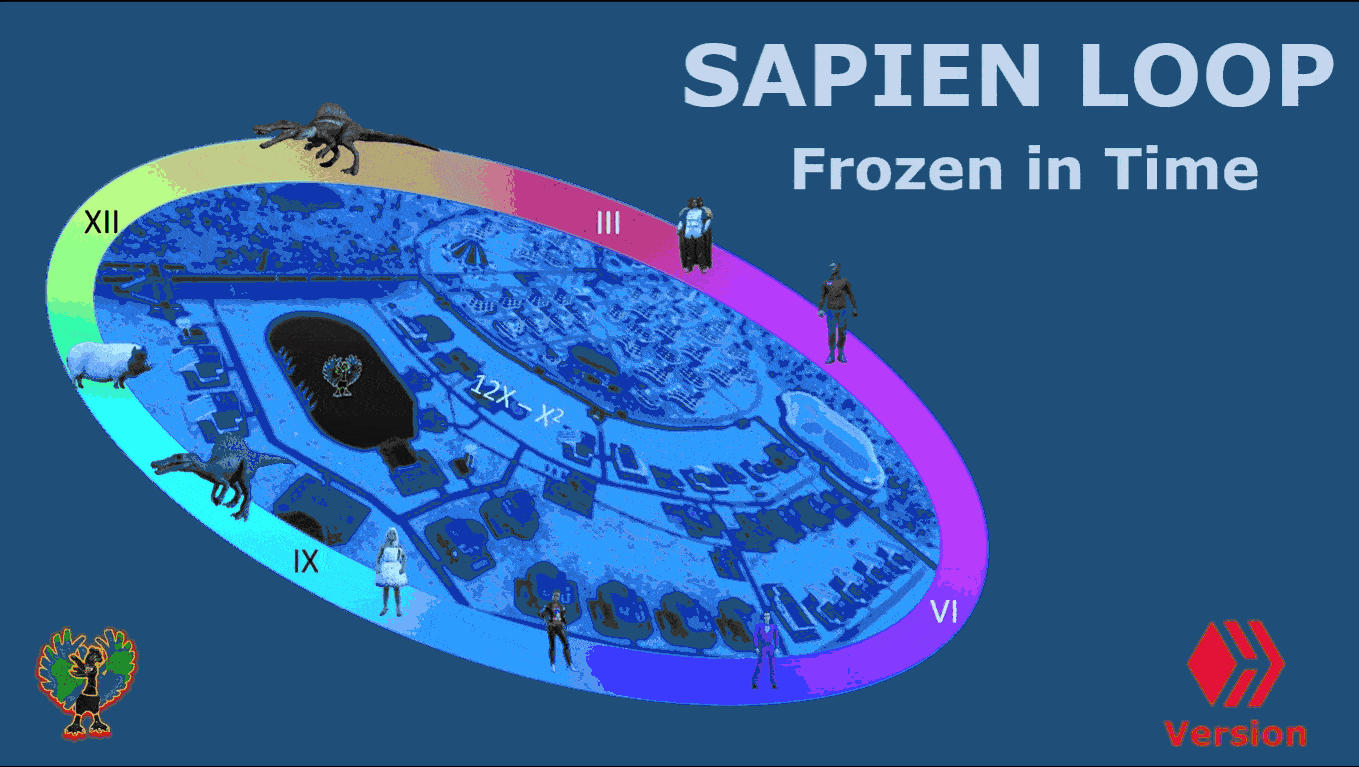
This story is based six years after the original story. The Downs Region is still suffering from a serious health crisis caused by the contaminated water. The main characters are desperately trying to a find a cure for the illness that has been caused by the water.
One of the main characters has discovered frozen humanoids in hidden chambers. It appears they have been frozen for a long time. These chambers connect to a vast network of tunnels. While exploring the tunnels, one of the frozen humanoids disappears. It appears he has been stolen.
The story takes a step back in time to tell the story of the frozen humanoids. How and why were they frozen? This part of the story also explains the fall of ancient Sapey and the birth of the Sapiens. Can those from the past be able to coexist with those from the present?
Hive: Future of Social Media
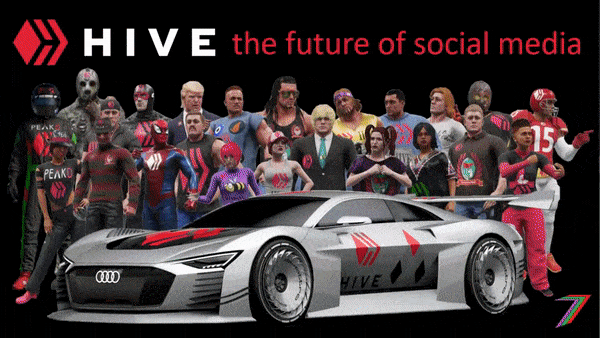
Spectrumecons on the Hive Blockchain

This post has been manually curated by @steemflow from Indiaunited community. Join us on our Discord Server.
Do you know that you can earn a passive income by delegating to @indiaunited. We share more than 100 % of the curation rewards with the delegators in the form of IUC tokens. HP delegators and IUC token holders also get upto 20% additional vote weight.
Here are some handy links for delegations: 100HP, 250HP, 500HP, 1000HP.
100% of the rewards from this comment goes to the curator for their manual curation efforts. Please encourage the curator @steemflow by upvoting this comment and support the community by voting the posts made by @indiaunited.
I think I've personally come to a conclusion that it all boils down to the money. Technology advancement makes life easy, but then somehow life keeps technologically better because of it's financial prospect. I think if technological advancement doesn't guarantee money for business business, then we might have still been in 1800s.
I think the pharmaceutical industry is by far the most guilty party here.. I understand that money most be made and scarcity has to fuel need, but it's really diabolical to keep people from getting cured, because of the constant need to keep producing expensive medications.
@tipu curate
Upvoted 👌 (Mana: 44/54) Liquid rewards.
Money is a key driving force. I think it always has been. This is less of a problem when there is competition. However, for reasons I described in the post, there is limited competition in developing technology. The benefits accrue to the few. On top of that, Governments intervene to support the development of technology that aligns with their agenda. Overall, the benefits to the majority are dwindling.
Third world countries are far behind when it comes to technological advancement, so yeah I also agree that there are no competition in this regard. It's also very saddening because there are areas that requires the intervention of modern technology, especially in areas with incurable ailments, but yes. Governments only wants to fund what benefits their agendas.
https://x.com/jewellery_all/status/1926242146987704652
#hive